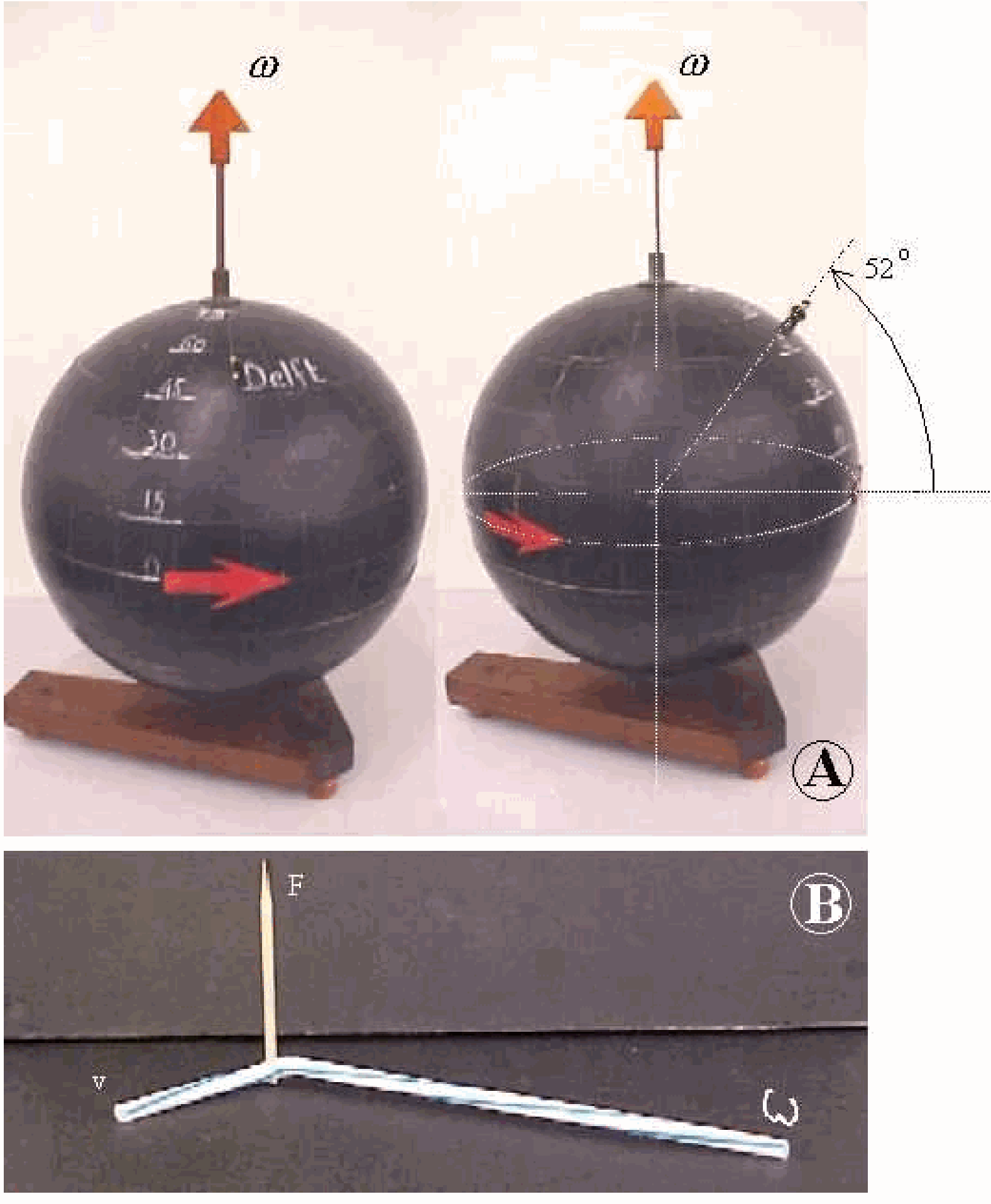01 Tablecloth Pull#
Aim#
To show an example of Newton’s first law
Subjects#
1F20 (Inertia of Rest)
Diagram#

Fig. 65 .#
Equipment#
Sheet of paper.
Different objects placed on the sheet of paper.
Presentation#
Set the table as shown in Diagram (light a candle etc.). Our tablecloth is technically not a tablecloth. We use a sheet of paper (see Diagram). Take the protruding free end of the paper in both hands and give a sharp downward jerk. The sheet of paper comes out from under the glasses and they are hardly moved. (Even the water in the glasses is not disturbed!)
Explanation#
This is one of the many possible demonstrations to show the validity of Newton’s first law.
Also, Newton’s second law can be used to explain this demonstration:
The effect of a given force between the sheet of paper and the glasses depends on the impulse of that force \(( F \Delta t)\). The impulse is small when the sheet of paper moves away quickly ( \(\Delta t\) is small). The resulting horizontal displacement will then be very small. Analysis shows that the horizontal displacement \(d\) of a mass on the sheet equals:
\(d=\frac{1}{2} k_{1} g \Delta t^{2}\left(1+\frac{k_{1}}{k_{2}}\right)\), where \(k_{1}\) is the coefficient of friction between sheet and glass and \(k_{2}\) is the coefficient of friction between glass and table and \(\Delta t\) the time to pull the sheet from beneath the glasses. So \(d\) is very sensitive to \(\Delta t\)!
Remarks#
After the lecture students like to try the demonstration by themselves.
This demonstration needs trying it before you show it!
Video Rhett Allain#
Sources#
Ehrlich, Robert, Turning the World Inside Out and 174 Other Simple Physics Demonstrations, pag. 21
Sutton, Richard Manliffe, Demonstration experiments in Physics, pag. 46-49
Jones, Evan, The Physics Teacher, Vol. 15, pag. 389
Perez, Joseph, The Physics Teacher, Vol. 15, pag. 242
